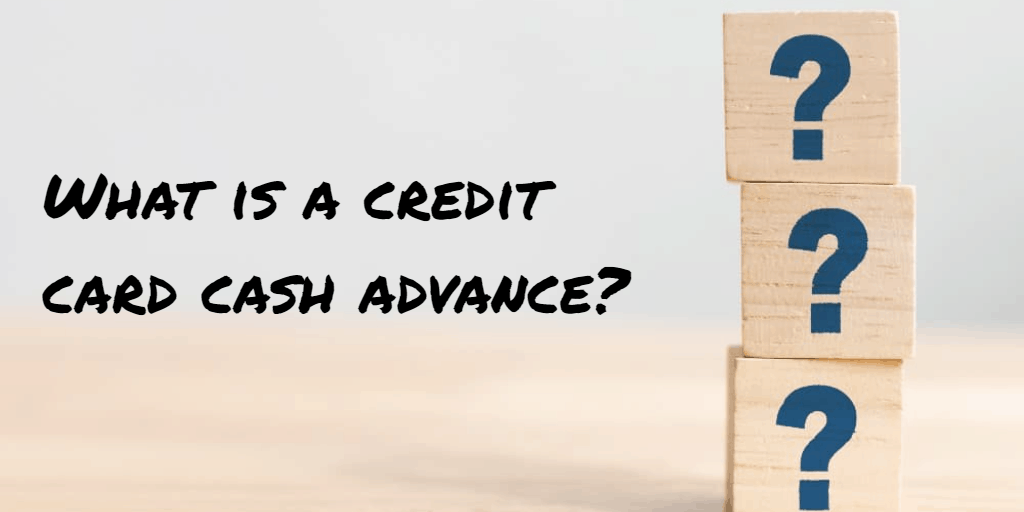When you need cash fast, you may feel tempted to insert your credit card in an ATM and withdraw cash. After all, you have credit limits, right? What’s the point in having credit limits if you don’t use them in a time of need?
The short and long of it: using your credit card to pull out cash — a “cash advance” — can become an expensive way to withdraw money. Unless you really, really need cash, you should avoid them at all costs (and trust us: there are costs). To help you see why, let’s take a closer look at credit card cash advances.
What is a credit card cash advance?
A credit card cash advance is simply a way to borrow physical cash from your card issuer. To do a cash advance, you insert your card in an ATM and punch in your PIN (usually you’re use a special PIN for cash advances, one that your card issuer provides). Then you take your cash and go.
Similar to using your credit card for everyday purchases, you have a credit limit on how much cash you can withdraw. Often, this limit is lower than your card’s overall credit limits, usually around 20-50% lower. For instance, if your credit card has a credit limit of $10,000, your cash advance will likely be between $2,000 and $5,000.
Cash advances aren’t limited to ATM withdrawals. In fact, your card issuer may consider any number of “cash-like” transactions to be cash advances. For instance, credit card companies often regard buying lottery tickets, casino chips, sports bets, gift cards, travelers cheques, and even cryptocurrencies to be cash advances.
What are the consequences of a cash advance?
Since you’re literally using your card to “buy” stone, cold cash, credit card companies typically frown upon cash advances. Here’s what you can expect when you do one.
1. Your cash advance has no grace period
Normally, when you use your credit card for everyday purchases, you have a built-in grace period between the day you receive your statement balance and the day you’re supposed to pay it. As long as you pay the balance, you won’t pay interest on your purchases.
This is not so with a cash advance.
When you use your card to perform a “cash-like” transaction, you start paying interest the day you do it. No grace periods. No interest-free windows. Until you pay off the cash advance, you’ll keep accruing interest, which can get expensive fast.
2. You’ll have a higher APR
Not only will you start paying interest immediately, but you’ll also pay it at a higher rate. Your credit card issuer will kick up your card’s APR — the annual percentage rate — a few notches for any cash advances. For example, your card may have an APR of 21% for everyday purchases. But for cash advances, you could pay anywhere from 23% to 25%. The higher APR, in addition to the lack of a grace period, is the reason cash advances become so expensive in such a short period of time.
3. You pay cash-advance fees
Finally, to top it all off, you’ll pay an upfront fee for cash advances, usually 3-5% of the money you’re withdrawing. For instance, if you withdraw $1,000, you’ll pay 5% of $1,000, or $50, just to perform the transaction.
Should you get a credit card cash advance?
To put it all together: when you take out cash with your credit card, you’ll pay an upfront fee, accrue interest immediately, and accrue interest at a much higher APR. For that reason, cash advances aren’t the most cost-efficient way to withdraw cash, nor the most savvy. If you can help it, try to avoid credit card cash advances as much as possible.
Of course, you’re not always in control of what happens to your finances. Sometimes, you need cash fast. You may face eviction from your house or apartment, for instance, or you could be close to defaulting on a loan. In these cases, a cash advance may be a smarter choice than payday or personal loans.
But try to exhaust your options first. You could look for a low-interest loan, such as a payroll loan, or you could ask family or friends to front you the money. Either way, definitely calculate the cost of a cash advance on your credit card before doing it, as it may surprise you how much they cost.
Some offers on The Motley Fool are from our partners — it’s part of how we make money and keep this site going. But does that impact our reviews? Nope. Our commitment is to you. If a product isn’t any good, our review will reflect that, or we won’t list it at all. Also, while we aim to feature the best products available, we do not review every product on the market.
